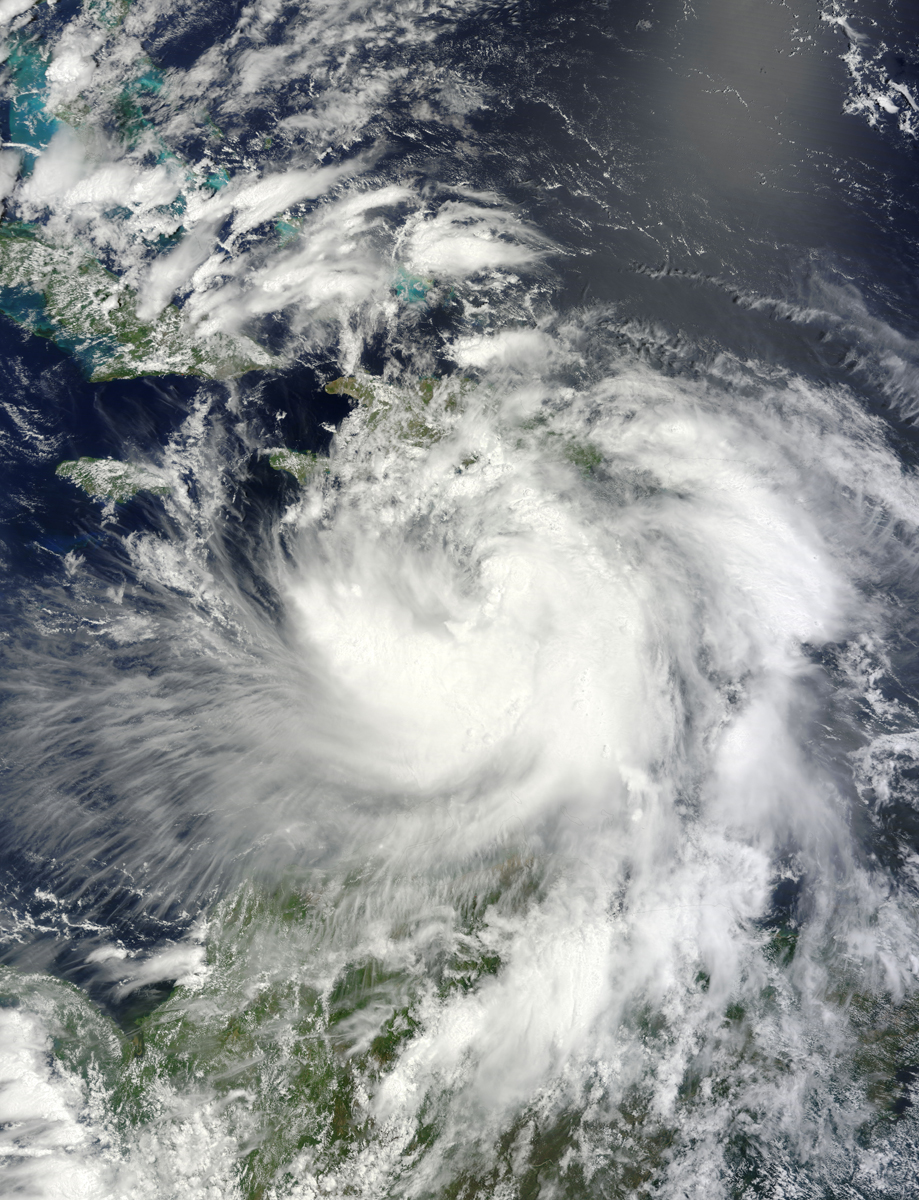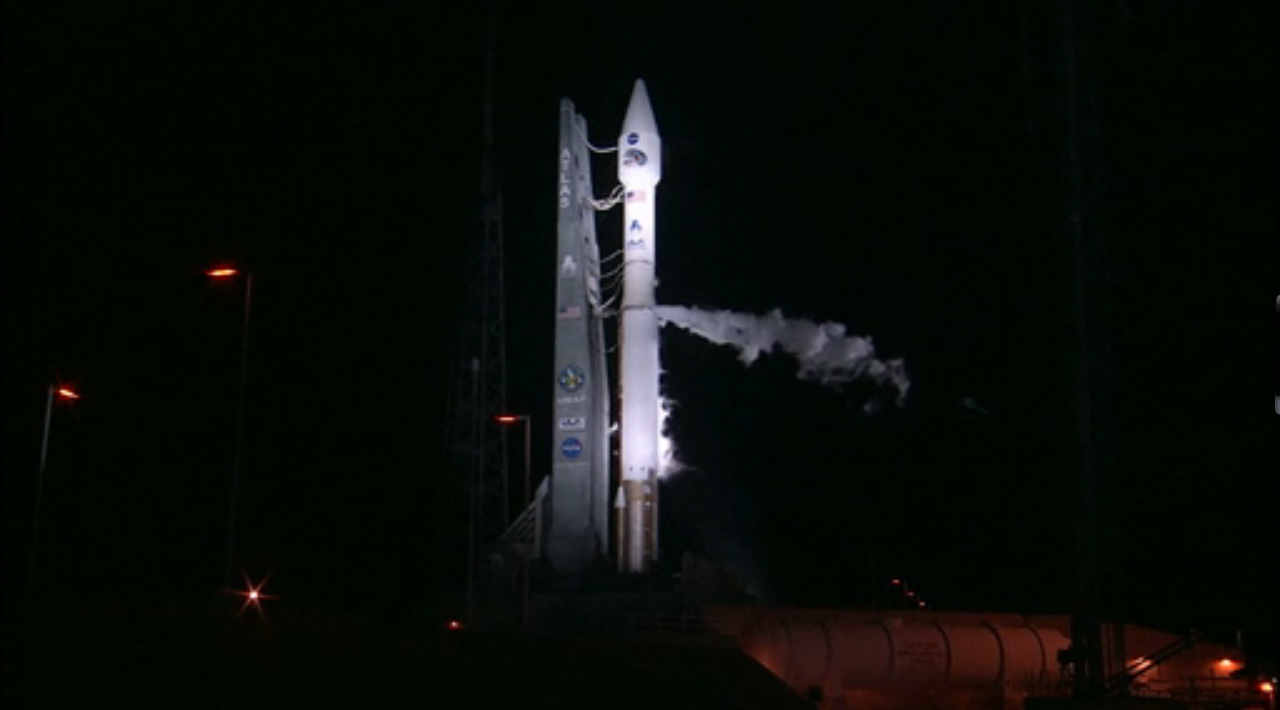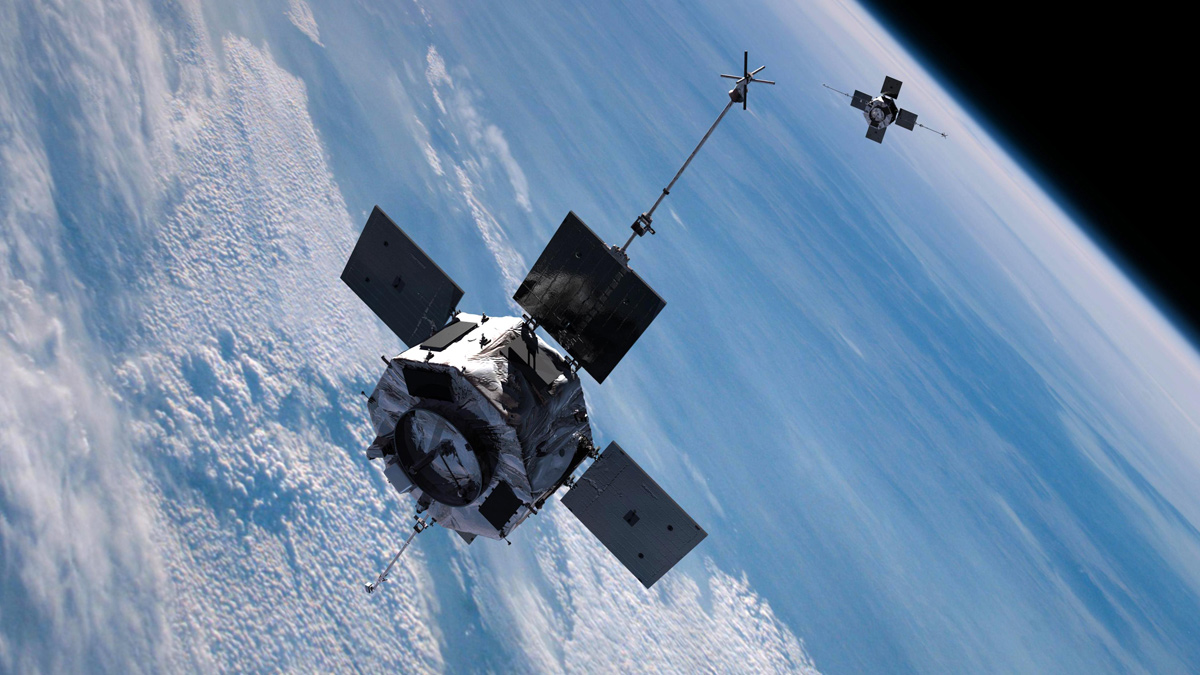Tropical Storm Isaac Delays Launch of NASA Satellites

This story was updated at 9:34 a.m. EDT
NASA has postponed the liftoff of two space radiation satellites to no earlier than Aug. 30 due to expected stormy fallout from Tropical Storm Isaac, space agency officials said today (Aug. 25).
The space agency announced the launch delay just hours after thunderstorms thwarted an attempted early-morning launch from Cape Canaveral Air Force Station in Florida today during a 20-minute window that opened at 4:07 a.m. EDT (0807 GMT).

With Tropical Storm Isaac expected to reach hurricane strength this weekend, mission managers for the twin Radiation Belt Storm Probes (RBSP) opted to roll the Atlas 5 rocket carrying the $686 million satellites back inside its protective hangar for safekeeping.
"This will ensure the launch vehicle and twin RBSP spacecraft are secured and protected from inclement weather," NASA officials said in a statement.
The radiation-monitoring mission is now slated to launch on Thursday, Aug. 30, at 4:05 a.m. EDT (0805 GMT), they added.
Tropical Storm Isaac is expected to reach hurricane strength today or tomorrow as it moves northwest, just east of Florida, on a course toward the state's panhandle, according to a National Hurricane Center forecast. Currently, the storm is about 95 miles (159 kilometers) east-southeast of Guantanamo, Cuba, with maximum sustained winds of 60 miles per hour (95 kph). [Amazing Photos from Inside Tropical Storm Isaac]
Saturday's postponed launch was the second delay in two days for the Radiation Belt Storm Probes mission. An issue with a rocket tracking beacon, needed to monitor the mission's Atlas 5 rocket during liftoff, thwarted a Friday launch attempt late in the countdown.
Get the Space.com Newsletter
Breaking space news, the latest updates on rocket launches, skywatching events and more!
Earlier this week, NASA also pushed back the first launch try by 24 hours, to Friday, to allow time to clear up a separate technical concern with the Atlas 5 rocket.

NASA's Radiation Belt Storm Probes mission is a two-year project to study the radiation belts around Earth. These belts, called the Van Allen Belts, are regions of harsh radiation that can be affected by strong solar storms that can pose a threat to satellites and astronauts in orbit, as well as communications and power infrastructure on Earth, mission scientists have said.
The new storm probes are expected to study the regions to help improve space weather forecasting and help design better spacecraft to withstand the harsh space radiation environment, NASA officials said.
You can watch NASA's launch of the Radiation Belt Storm Probe mission live on NASA TV beginning at 2:30 a.m. EDT (0630 GMT) here: http://www.nasa.gov/ntv.
Follow SPACE.com on Twitter @Spacedotcom. We're also on Facebook & Google+.
Join our Space Forums to keep talking space on the latest missions, night sky and more! And if you have a news tip, correction or comment, let us know at: community@space.com.

Space.com is the premier source of space exploration, innovation and astronomy news, chronicling (and celebrating) humanity's ongoing expansion across the final frontier. Originally founded in 1999, Space.com is, and always has been, the passion of writers and editors who are space fans and also trained journalists. Our current news team consists of Editor-in-Chief Tariq Malik; Editor Hanneke Weitering, Senior Space Writer Mike Wall; Senior Writer Meghan Bartels; Senior Writer Chelsea Gohd, Senior Writer Tereza Pultarova and Staff Writer Alexander Cox, focusing on e-commerce. Senior Producer Steve Spaleta oversees our space videos, with Diana Whitcroft as our Social Media Editor.









